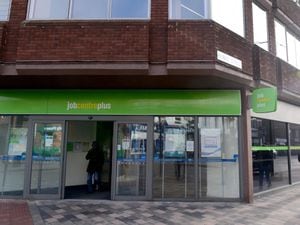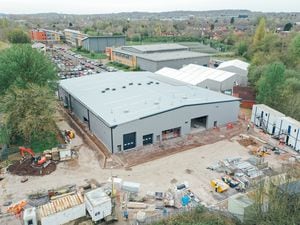Unemployment and claimants fall in the West Midlands
Britain's unemployment rate has hit its lowest level since 1974 but the number of workers dropping out of the jobs market also jumped higher, according to official figures.

The Office for National Statistics (ONS) said the unemployment rate fell to 3.6 per cent in the three months to July – the lowest rate since May to July in 1974.
Most economists had been expecting the unemployment rate to hold steady at 3.8 per cent.
In the West Midlands the unemployment figure was 136,000 (4.6 per cent of the working population) in the three months to July – down 2,000 on the three months to June. The region's employment figure was 2.85 million.
The West Midlands saw a fall in the numbers claiming unemployment benefits, including Universal Credit last month. The total of 177,450 (4.8 per cent) was down 475 on July.
In the Black Country Sandwell had 105 fewer claimants at 13,410 (6.5 per cent) with Wolverhampton down 10 to 12,060 (7.4 per cent).
Walsall had 70 more claimants at 9,775 (5.6 per cent) but Dudley was down 100 to 9,400 (4.8 per cent).
Staffordshire had an increase of 25 to 14,455 (2.7 per cent). Lichfield had a rise of 35 to 1,590 (2.6 per cent) with South Staffordshire up by 10 to 1,720 (2.6 per cent), Cannock Chase up 60 to 2,010 (3.3 per cent), and Stafford up 35 to 2,005 (2.4 per cent).
Wyre Forest, including Kidderminster, also had a rise and was up 15 to 1,930 (3.3 per cent).
The national figures also showed that the so-called economic inactivity rate rose to 21.7 per cent – its highest level for more than five years.
The ONS said those classed as economically inactive rose by 194,000 in the quarter to nine million, due mostly to rising numbers of long-term sick as well as students, which has led to a shrinking labour market.
Britain's inactivity rate has also been pushed higher in the past few years as older workers have chosen to retire early throughout the pandemic.
Experts said this will cause further concern among policymakers at the Bank of England in their battle to rein in inflation, as shortages of workers in the market is driving up wage growth and firms are responding by hiking prices.
But there was some sign that worker demand may be easing, with a 34,000 drop in the number of vacancies to 1.27 million in the three months to August – the biggest quarterly fall for two years.
The figures also revealed that the employment rate eased back to 75.4 per cent in the three months to July, with the number of employed rising by a far smaller-than-forecast 40,000 to 32.7 million.
The more timely figures for payrolled workers in the UK showed a rise of 71,000, or 0.2 per cent, between July and August to 29.7 million, the ONS said, although these figures are often subject to big revisions.
Workers likewise saw their pay continue to fall behind sky-high inflation despite another steep hike in earnings as the cost-of-living crisis hit hard.
The ONS said regular pay, excluding bonuses, grew by 5.2 per cent over the three months to July.
But, with Consumer Prices Index (CPI) inflation taken into account, real pay tumbled by 3.9 per cent year-on-year, according to the ONS.
It comes after CPI inflation jumped to a fresh 40-year high of 10.1 per cent in July as energy and food bills sent living costs racing higher.
The Government's move to freeze energy bills at £2,500 is set to rein in the peak in inflation but wages are still unlikely to keep pace with rising costs.
The ONS added that total pay including bonuses lifted by 5.5 per cent for the three-month period, falling by 3.6 per cent with inflation taken into account.
Samuel Tombs, chief UK economist at Pantheon Macroeconomics, said the jobs figures were "grim", showing "the recovery in employment has petered out".
James Smith, at ING, added: "The number of workers classified as long-term sick has jumped dramatically in the past couple of months, and that's one reason why firms are still struggling to source the staff they need.
"While worker demand has cooled, Bank of England hawks will be worried that these shortages will continue to push up wage growth."
He added this will reinforce the case for more hefty interest rate rises.
"Persistent worker supply constraints coupled with so far only modest signs of reduced hiring demand will provide further ammunition for Bank of England hawks to push ahead with further tightening," he said.
British Chambers of Commerce head of people policy, Jane Gratton, said: “With firms doing their best to keep afloat during a period of spiralling costs, they are also facing an extremely tight labour market which is further impacting their ability to invest and grow.
“Despite a second month of a decrease in job vacancies, the overall number of vacancies in the labour market remains high. With over 1.2 million unfilled jobs across the country, labour shortages have reached crisis levels for businesses across many sectors and regions.
“During a period of increasing inflation, and a stagnant economy, we cannot afford to let recruitment problems further dampen growth."





